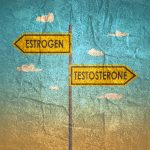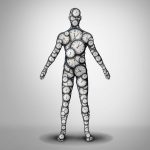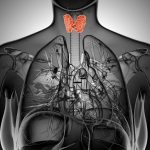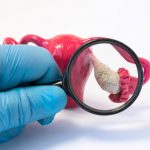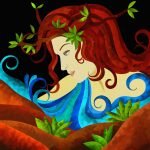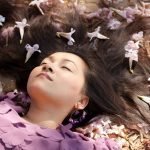Our Students at the Gathering: The Traditions We Risk, the Questions They Ask
David Schleich, PHD
Tradition presupposes the reality of what endures.
Igor Stravinsky
Early last November in Portland 250 students and their mentors from all over North America gathered in the Great Hall of NCNM. They came together to renew, or in some cases to regain, their connection with the roots and traditions of the naturopathic medicine they love. To ask the hard question is simple, the poet W. H. Auden said. But is the question difficult? Why, indeed, does the Gathering generate the energy it does among our students and our doctors?
Resonating across this particular weekend, and many like it in previous years, was a yearning, like some new river destined to seek the sea, a quest for the very roots of the medicine our students chose to study. It was my first time at the Gathering. I had heard about it for many years. Across the weekend I sidled into the conversations, listened, watched, and learned. All around me were students who were less than a year, two, three … four into an expensive decision in terms of time and money to carve a path through the heterodox medical education landscape which is naturopathic medicine. Once moving across that terrain, they report finding themselves oscillating between the “great enthusiasm for the possibilities of scientific medicine” and a history with a quite different mantra. On the one hand there were the palpable and tangible descriptions in guidance counselors’ offices, fingers pointing to the well-beaten path of the medical professional, received images sentimentalized across 4 decades of Dr. Kildare and ER; and, on the other, these very bright, well-educated naturopathic students very much part of a conversation about two competing worldviews. Harman puts it this way:
“The one dominant in the humanities and religion, in which values are important and such things as volition and human spirit are assumed to be ‘real’, and the other, scientific one in which they are not.”1
More than one student at this year’s Gathering talked about the gnawing instrumentality of science and its technologies. Kerplunk in the early months of second year, one group said their very ideas of “naturalism” [perhaps a ‘post-modern naturalism’ is what they really meant] were in disarray. Does ‘naturalistic’ only mean reports of causally linked descriptions or explanations of phenomena which can, in turn, reproduce measurable, material effects? Or, is there another dimension such as what Laurence Foss characterizes as a “meta-physical sequence of events, one that contains a self-caused, intentional event … capable of producing a material effect”2 obliging us to pay attention to how such an effect fits into a scientific model in which “the idea that the causally linked sequence of events capable of producing … effects either itself consists of physicalistic events or is reducible to such events.”2 The philosophical discourse distributed across sidebar conversations about what on earth homeopathy actually is, and how acupuncture ‘really works’.
Such are the moments of the Gathering, where the unstated search for some kind of unifying theory which can bridge what many see as a chasm between naturopathic medicine and its traditions and roots, and mainstream biomedicine and its assumptions and power. At the Gathering one is soon not surprised to hear, sprinkled within gutsy debates, questions such as, “what are we to make of the self-limiting, reductive theories of biomedicine” and statements such as “ the behavior of matter is not only a mathematical equation”.
One can get caught up in the enthusiasm and idealism of such conversations. We can converge at lunch in a comfortable corner of the Great Hall under one of its wonderful paintings depicting pillars of the profession, with thinkers like Max Delbruck, proxy visitors to the event via the well-read, determined students who attend. Delbruck wrote a generation ago that “science leads a deprived existence.”3 Jeremy Campbell was such a proxy visitor, too, cited by a student from Southwest College who explained Campbell’s insistence that “nature can no longer be seen as matter and energy alone.”4 As cited in Foss, Larry Dossey, writing about the epistemology (or theory of knowledge) of this kind of exchange, captures the sharp edge of this concern when he considered the trends in thought among medical historians and philosophers of medicine, writing,
“as with energy and matter, mind and matter may be equivalent even though they appear completely different. And just as energy and matter are related through a third entity, the speed of light, mind and matter may also be related through a third entity, meaning. This … might allow mind and meaning to take their place alongside matter and energy as major factors in health and illness.”5
Zeroing in on another wrinkle in the wonderful 3-day dialogue, an NCNM student during lunch called attention to Alfred North Whitehead’s idea of “subjective aim” in which he described how we are continuously adapting to our environment. Not so, another interjected, because a healthy lifestyle can only be sustained in a healthful environment. Naturopathic medicine, the conversation went, is all about respecting the natural biological state. Ergo, the urgent need for us to reclaim our roots in this medicine, the young man insisted.
Back in 1992 Eisenberg introduced this focus more broadly into social anthropology and into the discourse of biomedicine. “This concept of a natural biological state, a state naturally healthy because one to whose pressures we are evolutionarily adapted, furnishes insight into the deeper reasons behind the search of today’s health consumer for alternative medicine.”6
Foss explains that “viewed from an evolutionary perspective, at some level of consciousness, this search signals recognition of the need to stimulate a more ‘natural’ environment, one that more nearly replicates our natural biological state.”7
The Gathering is like that. It is a place where hard questions and slicing statements are safe. It is by no means a comfortable corner, but it is nonetheless a kind of corner in the larger process of professional formation which is affecting our students and our teachers.
Those students are carrying with them recently received images which run smack dab into the present turning point, this place in our schools and in the profession of fundamental questioning. The elders of the profession said more than once on that weekend that we must bring back, get back, harken back and welcome back the traditions of naturopathic medicine. How did we get here, to the Great Hall of NCNM, into the eye of such a conversation, once again as if for the first time, wondering out loud about how medicine has taken all these shapes and forms and spirals and conflicted corners?
No, it was not toward some well-lit pathway to the waiting rooms of the upper income tax brackets and community prestige which attracted the young people who were at the Gathering to our colleges. They somehow sussed out the traditions of vitalism right alongside the full throttle lanes of scientific theories and laws, explanation and prediction, the analysis of models, methods and assumptions in the orthodox and dominant biomedicine world. Perhaps what they want clarified is as follows:
“We might expect the prescription of a more ‘natural’ diet (herbal remedies, high-fiber, low-on-the-foodchain foodstuffs – nuts, fruits, uncooked vegetables); more ‘natural’ activity levels (exercise regimens, fitness programs, aerobic classes); more ‘natural’ stress loads (relaxation techniques, meditation, yoga, stress management seminars); a more ‘natural’ connection with our bodies (biofeedback, deep breathing, massage, chiropractic); a more natural connection with our community – tribe, clan, village (support groups, twelve-step programs); a more ‘natural’ connection with Mother Earth (nature walks, organic gardening, naturopathy).”7
Their intuition, their very sensing, for example that there is what Tosteson (1990) calls a “connection between emotional and cognitive states and the physics and chemistry of the brain” or their agreeing with Margaret Wheatley that the world before them is one where “we have very different interpretations of what is going on, even though we look at the same information”8 are powerful reasons for us to pay close attention to the Gathering. In the conversations, mini-debates and testimonials among the workshops, these young people were calling for a return to the basics of naturopathic medicine, a re-embracing of what seemed to them old ideas now lost in a sea change of challenge and entitlement.
Instead of applying some medley of verbal salves and commentary about a blend of science and art, the elders who addressed those 200 naturopathic students fueled their fervor by advising them not to surrender a world view which could contain contrary imperatives such as the puzzling and disappointing collisions of biomedicine with balneotherapy, of scientific method with the remarkable propensities of homeopathy.
What emerged during the weekend for me was the realization that many of these young people do not know the history of their medicine well. They did not use, as a kind of lattice-work for the philosophical complexities they face, a well fleshed out platform of medical history, both allopathic and naturopathic, on which to build their values and convictions. They will benefit tangibly, for example, from knowing about the reform of medical education institutions which drove into insolvency thousands of Thomsonians and homeopaths and naturopaths across North America in the time of my grandparents. That transformation, equally as throttling as the one occurring now, took root in the United States and Canada and has been a persistent theme in the institutionalizing of mainstream allopathic and even naturopathic medical education ever since. They know a bit about Flexner who published his work in 1910, but not a lot. They don’t know that by 1930 only 76 U.S. medical schools were operating and that many of them pushed back strongly against the biomedicine revolution which transformed medical education in North America and the world in those decades.
Equally urgent is that our students know that during this same period, homeopathic and naturopathic proprietary schools declined precipitously. Naturopathic medical education almost came to a point of extinction by the mid-1950s.9 The most important part of the melodrama of “point of extinction” is not that NCNM or OCNM or CCNM or Southwest almost tanked more than once, and that there were heroes who saved the day, but that there were immense shifts in thinking and policy afoot, that there were opportunities and dangers about which we simply have to be aware.
The palpable enthusiasm for the scientific medicine which was worrying the students at the Gathering in 2009 began to express itself institutionally in the early part of the twentieth century as the wide acceptance of Abraham Flexner’s report gained momentum and attracted financial and political resources. A shift in educational design and delivery looked not to Lust’s school in New York or to the eclectic school in Cincinnati, but rather to the Johns Hopkins Medical School or the University of Pennsylvania for an institutional model. The era of proprietary schools of medicine in the allopathic, naturopathic, homeopathic and osteopathic fields ended, and along with it came the wave of state licensing activity which has now rolled forward accompanied by accreditors and state degree authorization offices.
Throughout this period prior to WWII the availability of naturopathic medical training in North America diminished rapidly. The newly licensed medical schools quickly adopted new approaches to medical education, an approach to curriculum design and delivery which John Dewey would later describe as “progressive education”. These developments changed medical education irreversibly in the United States and Canada. Biomedicine prevailed.
Almost a century later, a vanguard of students met at Southwest College to capture the spirit and energy of that history and those origins. They were hungry for a medicine which, in the worlds of one participant, debating vigorously during a breakout session, “does not stop with explanations grounded in mind-body dualism, but which moves elegantly and humbly before natural materials and simple protocols and treatments, which grips nature’s hand and welcomes ideas and practise which included a framework where social, psychological, behavioral and spiritual dimensions of illness were safe for a doctor to consider”.
In the 1920s and 1930s the new licensing restrictions in many U.S. states and Canadian provinces continued to isolate and eventually end the large number of proprietary medical schools training not only medical doctors, but also naturopaths, homeopaths, herbalists and osteopaths, all key primary health care professionals of that era. Clearer demands for accountability in education and practice, supported both during medical training and afterward in the form of continuing medical education, were coupled with a drive for recognized accreditation. Inevitably, like some unrelenting mudslide, medical science “lurched forward on conceptual legs borrowed from another epoch” (Foss, p. 19).
Late on the second day I got involved in a conversation with a teacher and three students about the accuracy of the biological level being the only relevant level of functioning for any scientific explanation of pathogenesis. I was out of my depth for sure, not being clinically trained, but was very attracted to the quick flow of discussion which included comments about Foucault’s contention that autopsies started the real first objective access to disease, that Laennec’s stethoscope separated the doctor and patient in ways which were good and bad at the same time, and on into our modern culture where biotechnology rules and the era of rational medicine took off, leaving the doctor and the patient alienated. We don’t like it, they were saying.
These were the imperatives led to the relentless disappearance of one eclectic school of naturopathic medicine after another, and one school of homeopathy after another. The urgency and primacy of scholarly activity, for example, among the faculty of the surviving schools may well have been declared, but the modest momentum of research projects and collaborations further marginalized not only the institutions themselves, but also the professions they served.10
While medical doctors freshly minted from the growing array of licensed and accredited medical schools responded in their actual clinical practice to the scientific medical knowledge now being generated in the medical schools housed in research universities, the naturopathic practitioners increasingly “lacked a philosophical overview which would allow a selective incorporation [of medical and technological breakthroughs] without weakening its foundations”11 McKee points out that “the naturopathic view of illness as a process or activity initiated by the body in adaptive responsive to an unnatural environment challenge[ed] the Western view of disease as malfunction, as an entity — as something that happens to the individual as a consequence of assault by an external agent.”12
Pinsky contends that with such a view of illness, naturopathic practitioners lagged further and further behind in “incorporating those breakthroughs which might have benefited patients.”13 The naturopathic medical education institutions did not position themselves to develop reliable alternatives for evaluation of [their] own holistic therapies”13 and inevitably moved further and further away from the mainstream higher education sector.
Rather than speak of the homeostatic mechanisms which allow
the body to maintain health, they clung to the idea and vocabulary
of the vital force and inexplicable cures took the place of physiological
effects.13
At the same time, the Chiropractic and Osteopathic professions, both grounded in drugless healing roots and therapies, took notice and developed institutional resources to situate themselves in orthodox professional medicine9,14,. Not as quick to march to the drums of the research university platform for professional medical education, the naturopathic profession’s educational institutions were reduced by mid-century to one, the very school where the Gathering of 2009 was occurring, founded in 1956 by Charles Stone, Frank Spaulding, and W. Martin Bleything.
These young students were not prepared during the Gathering to absorb the metaphysical cost of practicing scientific medicine. They said all weekend long, if I may cite Daniel Dennett, a kindred philosopher who does not know them, that the biomedical world which they were loathe to embrace in some fundamental or final way, made the doctor – patient relationship subpersonal and they did so “by analyzing a person into an organization of subsystems (organs, subroutines, nerves, faculties, components –even atoms) and attempting to explain the behavior of the whole person as the outcome of the interaction of these subsystems.”15 Carol McMahon perhaps captures the moment best with her comment about the origins of biomedicine and how it has “replaced the holism of pre-modern theory with a dualism of mind and body.”16 The young students at the Gathering of 2009 were definitely not ready to acquiesce without a fight to such a world view.
The Flexnerian revolution succeeded in generating a transformation from “an apprenticeship system” to “a recognized discipline” within higher education17 among the allopathic medical schools. The impact of this transformation systematically informed the institutionalizing of naturopathic colleges in the United States and Canada throughout the remainder of the twentieth century. This complex and broadly based change in how medical education was designed and delivered is still very much part of the current context and debate about what the future of naturopathic medical education in the United States and Canada shall be.18,19 The students and their teachers who were at the Gathering this year are, as one of the organizers put it at the ceremonial circle in a park near the college, under a starry sky and protected by very old trees, “totally into this conversation for as long as it takes”. They believe in the possibility of a medical model which can be scientific and humanistic at the same time.
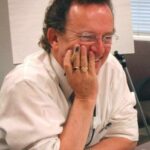 David Schleich, PhD is president and CEO of NCNM, former president of Truestar Health, and former CEO and president of CCNM, where he served from 1996 to 2003. Previous posts have included appointments as vice presi-dent academic of Niagara College, and administrative and teaching positions at St. Lawrence College, Swinburne University (Australia) and the University of Alberta. His academic credentials have been earned from the University of Western Ontario (BA), the University of Alberta (MA), Queen’s University (BEd), and the University of Toronto (PhD).
David Schleich, PhD is president and CEO of NCNM, former president of Truestar Health, and former CEO and president of CCNM, where he served from 1996 to 2003. Previous posts have included appointments as vice presi-dent academic of Niagara College, and administrative and teaching positions at St. Lawrence College, Swinburne University (Australia) and the University of Alberta. His academic credentials have been earned from the University of Western Ontario (BA), the University of Alberta (MA), Queen’s University (BEd), and the University of Toronto (PhD).
- Harman W. Introduction. In: Harman W, Clark, J, eds. The Metaphysical Foundations of Modern Science. Sausalito, CA: Institute of Noetric Sciences; 1994:xvii-xviii.
- Foss L. The End of Modern Medicine: Biomedical Science Under a Microscope. Albany, NY: State University of New York Press; 2002:215.
- Delbruck M. In: Judson HF. The Eighth Day of Creation: The Makers of the Revolution in Biology. New York, NY: Simon and Schuster; 1980:615.
- Campbell J. Grammatical Man: Information, Entropy, Language, and Life. New York, NY: Simon and Schuster; 1982:16.
- Foss L. The End of Modern Medicine: Biomedical Science Under a Microscope. Albany, NY: State University of New York Press; 2002:139.
- Eisenberg DM, Kessler RC, Foster C, et al. Unconventional medicine in the United States. Prevalence, costs, and patterns of use. N Engl J Med. 1993;328(4):246-252. Cited by Foss L.
- Foss L. The End of Modern Medicine: Biomedical Science Under a Microscope. Albany, NY: State University of New York Press; 2002:197.
- Wheatley M. Leadership and the New Science: Discovering Order in a Chaotic World. San Francisco, CA: Berrett-Koehler Publishers, Inc.; 2006:xi.
- Cody G. History of naturopathic medicine. In: Pizzorno JE, Murray, MT, eds. A Textbook of Natural Medicine. Seattle, WA: Bastyr College Publications; 1985:I-22.
- Keating JC, Callender AK, Cleveland CS. A History of Chiropractic Education in North America: Report to the Council on Chiropractic Education. North Tazewell, VA: Association for the History of Chiropractic Council on Chiropractic Education (U.S.); 1998:iii.
- Pinsky L. Philosophy of naturopathic medicine. In: Pizzorno JE, Murray, MT, eds. A Textbook of Natural Medicine (pp. I: Philo 2-1−2-7). Seattle, WA: Bastyr College Publications:2-6.
- McKee J. Holistic health and the critique of Western medicine. Soc Sci Med. 1988;26(8):775-784.
- Pinsky L. Philosophy of naturopathic medicine. In: Pizzorno JE, Murray, MT, eds. A Textbook of Natural Medicine. Seattle, WA: Bastyr College Publications:2.
- Baer HA. Divergence and convergence in two systems of manual medicine: osteopathy and chiropractic in the United States. Med Anthropol Q. 1987;1(2):176-193.
- Dennett DC. Brainstorms. Montgomery, VT: Bradford Books; 1978.
- McMahon CE. Second readings: afterword. Advances. 1984;1(1):35-36.
- Ludmerer KM. Time to Heal: American Medical Education from the Turn of the Century to the Era of Managed Care. New York, NY: Oxford University Press; 1999.
- Berliner HS. A larger perspective on the Flexner Report. Int JHealth Serv. 1975;5(4):573-592.
- Baer HA. Biomedicine and Alternative Healing Systems in America: Issues of Class, Race, Ethnicity and Gender. Madison, WI: University of Wisconsin Press; 2001.


